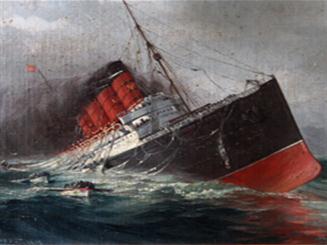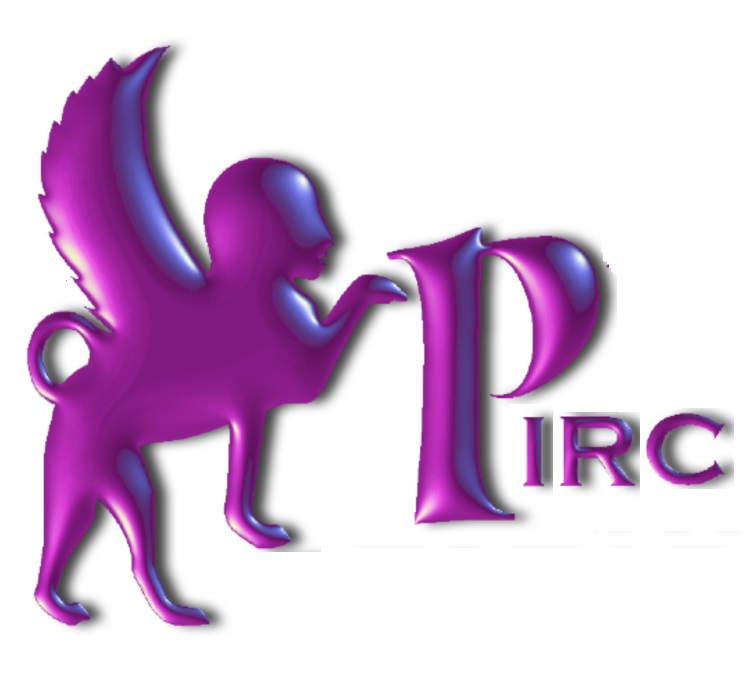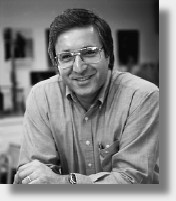Victor Issa: Dialogue with an Adventist sculptor with a vision for the beautiful
by Erik Stenbakken
 A perpetual smile adorns his face. Is that a symbol of discovery or achievement? Hard to say, but Victor Issa is a man who combines the challenge of discovery and the satisfaction of achievement in whatever he does—at home, at church, or at work. After all, he is an artist who keeps searching, even as he keeps bringing life to his ideas and form to his vision. Issa was born in Syria and raised in Lebanon. The influence of those ancient lands left its mark on his young mind. As a boy he grew with centuries of civilization all around him, and had a special appreciation for the beautiful and the creative. So it was not a surprise that when it came to college education, he chose a major in art and a minor in music. He is a 1980 graduate of Union College in Lincoln, Nebraska. Victor Issa knows how to model clay for bronze casting, turning metal into pictures of quiet beauty and works of enduring art. He employs the old method called “lost wax” process. Using a special modeling clay, he creates exactly the look and feel he wants in the finished pieces. Then he takes the clay sculpture to the foundry where a rubber mold is made and a wax copy is cast. The wax is then dipped in ceramic slurry inside and out. The ceramic is heated, melting the wax (hence, “lost wax”) and hardening the ceramic. Molten bronze is poured into the form. When it is cooled, the ceramic form is broken off. And behold, the sculpture in bronze—with every characteristic and detail as in the original clay model. Victor is married to Candy, a registered nurse. They live in Loveland, Colorado, and have four girls, ages 9 to 15, all home schooled with Candy as their teacher. |
Some sculptors see the completed figure before they begin and “release it.” Others see a piece developing as they work. How would you describe your style?
Often, it is a process of discovery. Each piece is different from the other, and each is tuned to the individual model I’m working with. I have tried this exercise several times: I’ll have models hold poses of existing sculptures that I have done, and it is amazing how different the piece looks with different models. The end result is not nearly as successful in my mind as it is interfaced with the model I use for the idea.
What sets your sculpture apart from others?
My methodology and finishing reflect the classical style. How I arrive at poses and how I capture life in a piece may also make a difference. I work from life as much as possible rather than from photographs. That gives a lot more lifelikeness to my work.
What do you mean, “work from life”?
When I come up with a concept, I want to keep it alive through the process from the beginning to the finish. I want the person who is modeling to emerge through the bronze. I’ve seen so many sculptures that look so posed, so lifeless, and so dead. A lot of that is caused by photographed models. Photographs are poses. Sculptors who use photographs are true to what they see in the picture, and the end result is a sculpture that is posed and lifeless. I don’t have my models hold a pose for more than a few seconds. They constantly go in and out of the pose. I tell them “keep it fresh.” I want to keep my models from getting tired out.
How much of the sculpture that you do—especially the monument size—is influenced by its environment?
Most of the life-size sculpture I do starts as a maquette. I don’t always think of the piece as going to life size. Once in a while a piece touches me and says, I want to be life-size. Sometimes I look at a piece, and it’s crying to be a fountain.
Does your cultural or ethnic background affect your work?
My ethnic background! Certainly one cannot escape from the influence of one’s upbringing. Egyptian art has always intrigued me. And then there is the subculture of Adventism. How can one escape that? I believe strongly in the need to uplift humanity. I have heard other artists say they sculpt or they paint what’s in their heart. I want to make sure that what’s in my heart is in tune with God and what I produce will uplift people and will help them appreciate true beauty.
What do you think art is, and why should we care about it?
Art is everywhere. I can’t conceive of life without art. So much is made possible with art that otherwise would not be. Personally, I would be hard pressed to live without art. I can’t imagine doing anything else. It is so much a part of my life that I can’t even have an objective view on that. Most people don’t realize that everything they touch was created in a sense by an artist or sculptor. That’s the practical aspect of art.
On the other hand, there is the world of fine art that enriches life beyond measure and beyond words. The animal kingdom has no art in its existence. I believe this distinction is another illustration of the “image of God” in the human family. Fine art serves no practical purpose other than to provide beauty, stimulate thought, and uplift the spirit.
An accountant might see what you do as more of a hobby than a job. What do you do as a hobby? Accounting?
No [laughs], I love music. I’m involved in a musical group at the church. Photography, too. I don’t really need a hobby. My work is so fulfilling in every aspect of my life.
How do you balance the family/work aspect of your life?
My studio is just 65 feet from the house. I measured that so I can tell people, “I have to go 65 feet to work every morning!” That close proximity to my family has been a tremendous blessing for me. The children come and spend time with me in the studio. I’m always home for at least two meals a day.
How long does it take to do a single life-size piece?
Probably about 200 to 250 hours for the clay work. Then there is the foundry work and other details involved. Regardless of how long it takes—and each work is different—what counts is the final result and the satisfaction it produces.
How much does a life-size monument cost?
Something like the Jedediah commission I did several years ago (which was one and a half times life-size and included a bronze maquette) would cost about 50 to 60 thousand dollars. That would include the foundry work and installation.
What projects are you working on now?
One involves a sculpture, called “Eden Restored” for a hospital system in the Denver area. It has eight life-size figures of different nationalities, depicting a possible scene in the earth made new. Another project has been commissioned by the General Conference of Seventh-day Adventists. The scene includes 10 life-size figures, the second coming of Christ in relief, and a flying angel to one side. It will be unveiled at the Toronto General Conference session in 2000, and its final home will be the Seventh-day Adventist World Headquarters in Silver Spring, Maryland. I have seven or eight sculptures of my own that I am working on from one-third size to lifesize.
Finally, do you see a dichotomy between working on spiritual themes and secular themes?
I don’t. Although a lot of my figurative work is classical and thought of as secular in nature, I consider the beauty of the human form spiritual. It is the ultimate beauty—at least so far as our experience is concerned. The name of my business, Crowning Creation, reflects the theme that governs my art: God’s act of creation was crowned by the creation of Adam, and then the jewel in the crown, Eve. I find ultimate grace, beauty, and spirituality in that form. When I do a sculpture of Jesus or a heavenly theme, I want that piece of art to express in a tangible form the ultimate spiritual hope we humans have.
Interview by Erik Stenbakken. Erik Stenbakken is a free-lance writer and photographer who resides in Lincoln, Nebraska,




